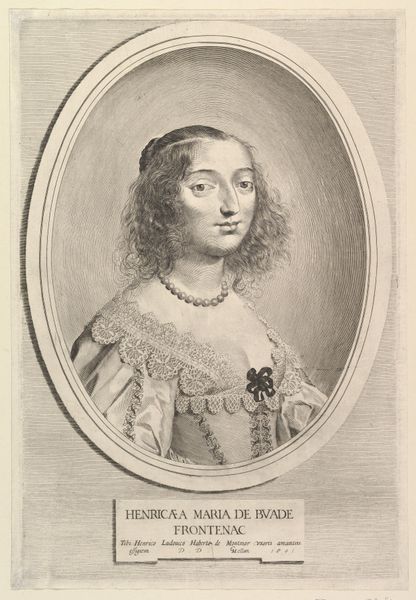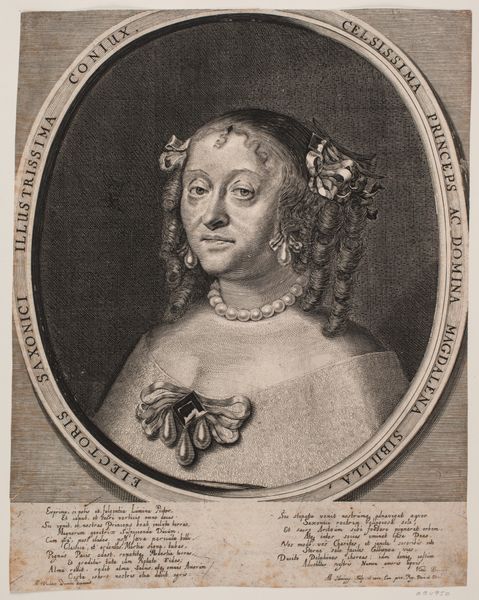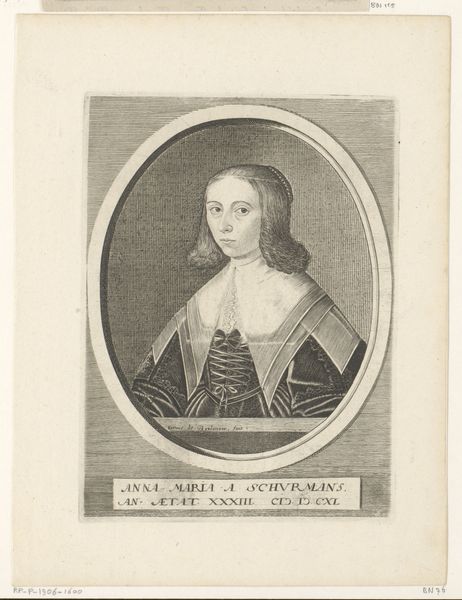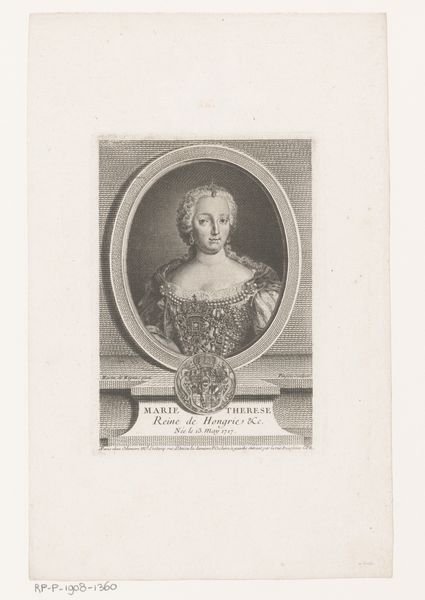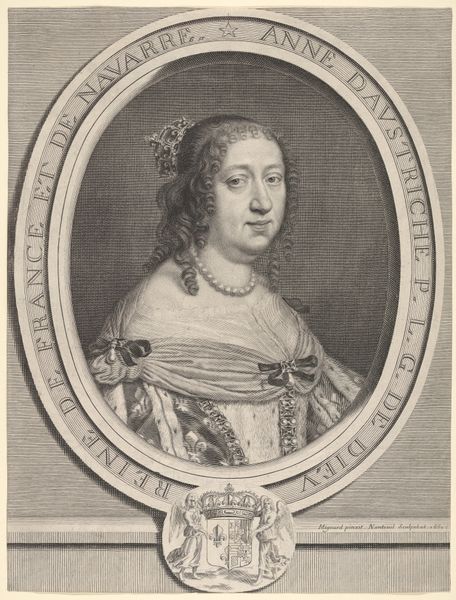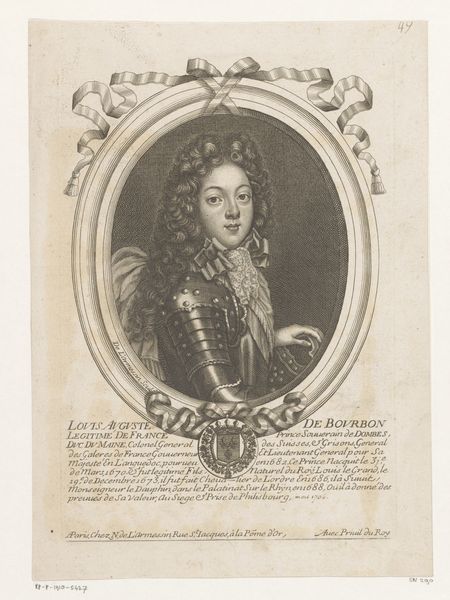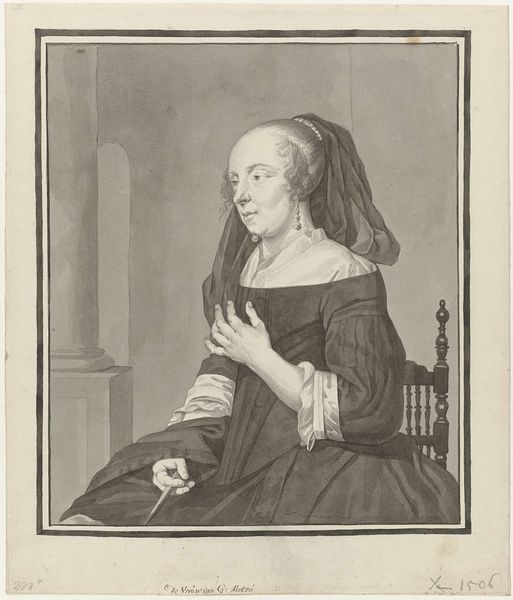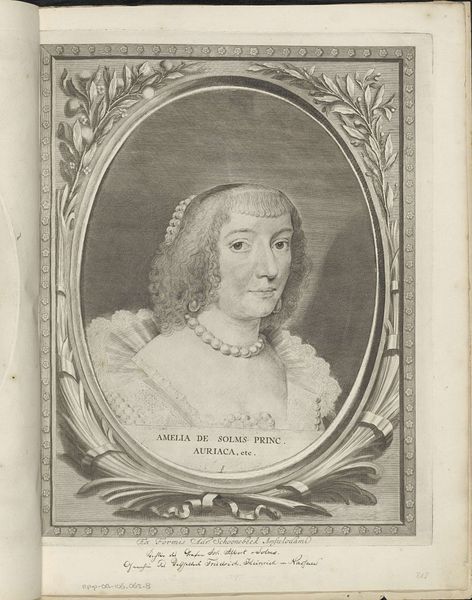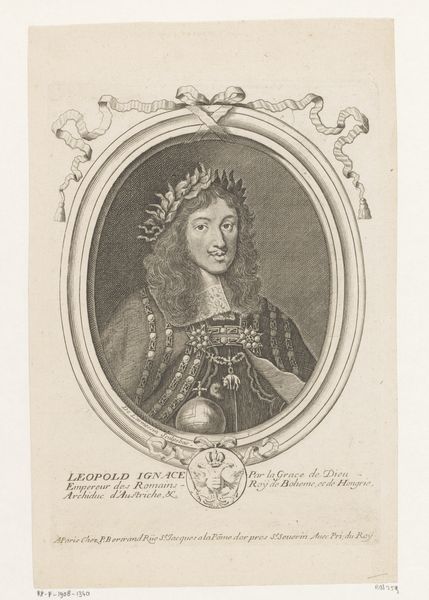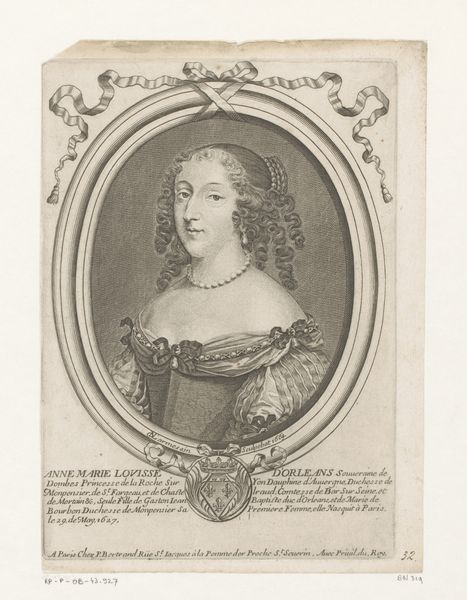
Henrietta Catharina, Princess of Orange Nassau, from Nine Portraits 1649
0:00
0:00
drawing, print, paper, engraving
#
portrait
#
drawing
#
baroque
# print
#
paper
#
engraving
Dimensions: 420 × 310 mm (image/plate); 520 × 380 mm (sheet)
Copyright: Public Domain
Curator: We’re standing before a Baroque engraving from 1649 by Cornelis Visscher, part of a series of nine portraits. This one depicts Henrietta Catharina, Princess of Orange-Nassau. Editor: Immediately, the formal presentation contrasts sharply with the almost melancholic, slightly weary gaze of the young princess. Curator: The piece captures Henrietta Catharina at a pivotal time. As a princess of Orange-Nassau, her identity was deeply intertwined with dynastic ambitions and the political landscape of the Dutch Golden Age. These portraits were strategic tools to establish not just an image but an aura. Editor: Right, that string of pearls, for instance. It's not just ornamentation, it is loaded with symbolic meaning, an assertion of status and an intimation of inherited power, echoing across generations through its shape. And that tightly framed oval contributes to a sense of constraint, suggesting predetermined roles. Curator: Precisely. Gender expectations of the time further complicated her position. Royal women often wielded influence primarily through marriage, shaping political alliances behind the scenes. So we might read into that subdued look a young woman facing a weighty destiny already charted for her by birth, religion, and gender. Editor: And consider her headdress. Those pearl strands are a symbolic bridge that visually marry family status with budding sexuality. This work serves a cultural memory function. A coded language understood by the contemporaneous elites who moved in that orbit. Curator: Yes, and the fact that it's a print, rather than a painting, allows for wider distribution and reinforces the strategic element to it. The medium amplifies the message. These images traveled. Editor: These portraits memorialized the cultural underpinnings of societal power during the 17th century. The fact we’re analyzing this work, several centuries removed, showcases their cultural endurance as symbols. Curator: Analyzing her image, particularly the subtle nuances Visscher captures, allows us a critical glimpse into the era's complex negotiations around gender, power, and identity, themes very relevant to current socio-political movements. Editor: To stand before it offers more than just historical appreciation. It reveals threads that extend through time—status, gender, image, memory—that still subtly influence modern eyes and expectations.
Comments
No comments
Be the first to comment and join the conversation on the ultimate creative platform.

